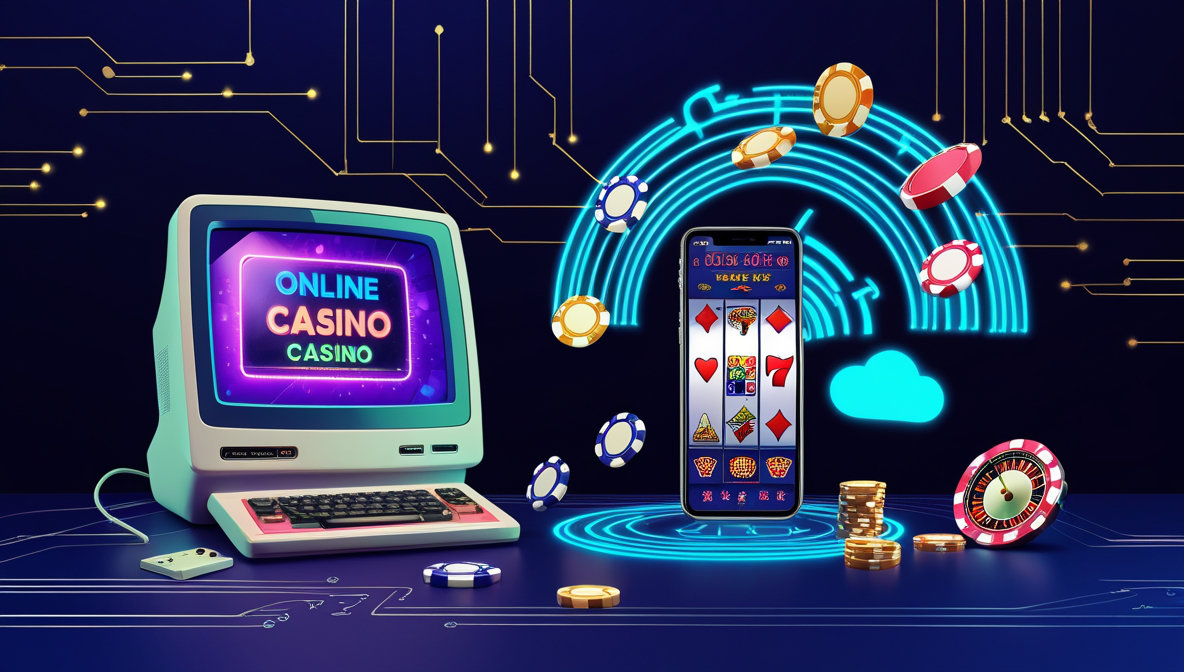Online casinos have undergone an extraordinary transformation over the past two decades. What began as simple, browser-based games with minimal interactivity has grown into a high-tech experience with mobile apps, live dealers, and advanced user interfaces. For players exploring the best online blackjack casinos on FIRST, the shift has made gaming more accessible and immersive than ever. But this progression didn’t happen overnight—it evolved step by step through technological milestones and changing user behavior.
Let’s break down the stages of development and how each shift helped shape what online gambling is today.
The Era of Flash: The Internet’s First Casino Playground
In the early 2000s, Flash technology made online casino gaming possible for the masses. It was widely used to build interactive games that could run on nearly any web browser. While the graphics were basic and the experience was sometimes clunky, it was revolutionary for its time.
Key Features of Flash-Based Online Casinos
|
Feature |
Description |
|
Browser-Based Play |
No need for installation; played directly through web browsers. |
|
Basic Graphics |
2D visuals, often with limited animation and sound. |
|
Widespread Compatibility |
Worked on most desktops with a Flash plugin. |
|
Limited Game Variety |
Focused on slots, basic blackjack, and roulette. |
|
Security Concerns |
Vulnerable to exploits, leading to trust issues. |
These games laid the groundwork for what came next. Despite their simplicity, Flash-based casinos gave users a taste of digital gambling, even if performance varied wildly depending on the device and internet speed.
Flash also had a major downside: it wasn’t designed with mobile in mind. As smartphones became more common, the limitations of Flash became harder to ignore.
HTML5 and the Mobile Shift
When HTML5 began replacing Flash in the early 2010s, online gambling operators seized the opportunity to redesign their platforms. HTML5 allowed games to run without additional plugins and made them responsive—meaning they worked just as well on smartphones and tablets as on desktop computers.
Advantages HTML5 Brought to Online Casinos
-
Cross-Device Compatibility – One version of a game could work across iOS, Android, and desktop.
-
Better Graphics and Audio – Higher resolution visuals and smoother transitions.
-
Faster Load Times – Improved performance over Flash.
-
Enhanced Security – Reduced vulnerabilities and better encryption standards.
-
Mobile Optimization – Games adapted to different screen sizes and resolutions.
For players, this marked a massive improvement in experience. Blackjack tables looked cleaner. Slots had animations and sound effects that rivaled real-world machines. And best of all, there was no need to download anything—just log in and play.
This shift also expanded the user base. No longer restricted to desktops, players could enjoy casino games on the go, whether during a commute or while waiting in line.
Rise of Casino Mobile Apps
As smartphones improved, operators began launching dedicated mobile apps to complement their web platforms. These apps were designed to run faster, offer push notifications, and use native phone features like biometrics and geolocation for a smoother user journey.
Why Players Choose Casino Apps
|
Reason |
Impact on Player Experience |
|
Quick Access |
Games launch instantly from the home screen. |
|
Tailored UX |
Interfaces optimized for small screens and touch controls. |
|
Live Notifications |
Real-time updates on bonuses and tournaments. |
|
Biometric Logins |
Easier, safer access with Face ID or fingerprints. |
|
Offline Play (Slots) |
Some apps support limited play without internet. |
The rise of mobile apps also led to improved loyalty programs and gamification features. Push alerts for limited-time blackjack tournaments or new slot launches kept users engaged. Loyalty points and mini-games encouraged daily logins. For operators, apps became powerful tools for retention.
Players looking for the best online blackjack casinos now often base their decisions on the strength of an operator’s mobile offering. A responsive, stable, and well-designed app can make all the difference.
Live Dealer Games and Streaming Integration
One of the most exciting changes has been the integration of live dealer games. Thanks to improvements in video compression and streaming protocols, players can now interact with human dealers in real time while playing blackjack, roulette, or baccarat.
These games combine the accessibility of online play with the human touch of a brick-and-mortar casino. With multiple camera angles, live chat features, and real-time results, the experience comes very close to sitting at a real table.
This also reflects a broader trend: players want authenticity, immersion, and interaction—qualities that old Flash platforms could never offer.
Looking Ahead: What’s Next for Online Casinos?
As the industry moves forward, several technologies are shaping the future of online gambling:
-
Virtual Reality (VR) – Immersive casino environments are under development.
-
Crypto Payments – More operators are accepting Bitcoin and other digital currencies.
-
AI Personalization – Platforms suggest games based on user preferences and behavior.
-
Regulatory Transparency – Clearer terms and better responsible gaming features are on the rise.
While no one can predict exactly how technology will change gambling again, one thing is clear: players want faster, safer, and more interactive experiences.
From pixelated card games to slick mobile blackjack tables, the evolution of online casinos reflects wider changes in tech and user expectations. What began with Flash games in the early 2000s now includes sophisticated apps, real dealers, and advanced personalization—all accessible with a tap. And as platforms like the best online blackjack casinos continue innovating, the next chapter in digital gambling is already in motion.







